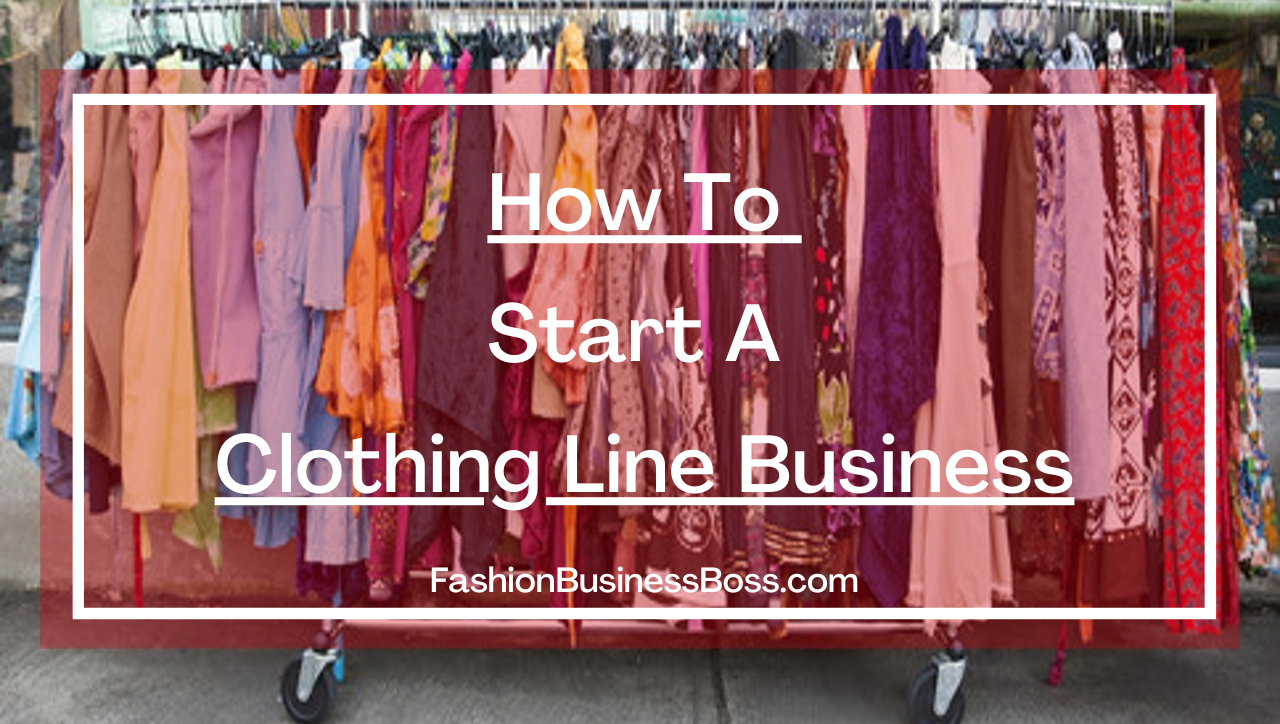Starting your own clothing line business means that you have a creative mind and an ambitious soul—making this sort of creative business a great choice for you. But where do you begin, and how do you move forward to getting to that point where you can sell your own designs?
To Start a Clothing Line Business
- Start with your business plan—and add as much information about your business as possible.
- Outline your budget and make sure you have enough capital to start.
- Decide whether you’re going to start physical or online store, then find your location.
- Gather your inventory, making sure it’s the highest quality for the lowest prices.
- Start hiring on employees or start planning your next steps forward.
- Develop your marketing strategy and sell your clothing.
Following these steps can certainly help you to start your own clothing line business—so how do you know what goes into a budget or business plan? What are the advantages and disadvantages of a brick-and-mortar store? Read on to find out more.
How To Manufacture Clothes For Your Fashion Business
Start with your business plan—and add as much information about your business as possible.
Without a business plan, you don’t have much of a business. Your business plan outlines all the important decisions you will make as a business—before you have to make them. That doesn’t mean you can’t redo your plan further down the road—actually, it’s advisable to make it a living, breathing document. Your business plan is mean to give you a guideline for what you want to do in the future and a will become a road map for you to get there.
What do you need in your business plan? First, you need to determine your business name. While this may take some time, feel free to skip this step as you start to develop what your business is and what you want it to stand for.

The next part of your business plan is your executive summary. This also may be one of the last things you do, as it summarizes the rest of your business plan, including your brand highlights, general information, your inventory and what you plan on selling, and an overview about your budget.
Next in your business plan comes your mission statement. Don’t think you have to run a non-profit to have a mission statement—this statement best serves you and your business if it is a declaration of your goals, your focus, and your purpose for starting this business. Why do you want to start this business? Outline it here.
Your objectives easily follow your mission statement, as these goals are to help you define your own success. What are your short-term goals? What are your long-term goals? Explain them here.
Next is your legal structure. This may seem like the boring part, but no matter how you sell your items, you need to have some sort of legal structure and licensure. Creating a limited liability company is usually your best idea, as it separates your business assets from your personal assets.
But you should always consult with a lawyer first, and you may need one when determining your insurance and license information. Make sure your business is insured, and your lawyer can help you receive your business license, along with any other licenses your home state may require.
After you’ve determined your legal structure, you need to consider your management structure and staffing. Are you starting small and just using yourself, or are you going to have to hire employees? Write out any job descriptions of positions you may need filled. Consider the management hierarchy and who answers to whom. What kind of benefits will you provide your employees? At what point would you consider expanding your staff?
Next is your product. While the most important part of your business, as it is your profit, you need to determine all of the above first. When you get to this point, you will have to outline what you want to sell and how it will be made. Consider your research you did before in this step.
Now, consider your marketing strategy. How are people going to find out about your products? What websites will you advertise with? What is your pricing for your products? What is your policy on marketing? Will you use influencers? What kind of photography do you want to take? This is where you also determine a branding package for your clothing business—colors, fonts, logos, etc.
Outline your budget and make sure you have enough capital to start.

Putting together a budget doesn’t have to be stressful, but you do have to be realistic. A part of your business plan, there are many things you need to outline when you put together your budget, including:
- A profit forecast. How much do you expect to make in your first year, your first month, your first quarter?
- Operating expenses. How much is it going to take to run your business? Include everything, like salaries, advertising, shipping, insurance, rent, repair, utilities, benefits, and other charges.
- Capital outline. What kind of funds are you going to need to start, and how are you going to receive them?
Decide whether you’re going to start physical or online store, then find your location.
Choosing your location is truly a choice unto you—there are benefits and disadvantages to a purely online store and a physical store. A physical location means more people can walk into your store, and according to ZipRecruiter, a small clothing store makes more profit per month that way. But you will incur many more costs, and a physical building can cost $20,000 upfront alone.
Online, you may not be making as much profit, but the number is comparable—only a few hundred dollars less. While you don’t have the benefit of allowing customers to walk into your store, you don’t have to pay that extra money to get yourself a storefront and can instead do everything online.
How To Manufacture Clothes For Your Business
Gather your inventory, making sure it’s the highest quality for the lowest prices.
Your products are the front of your company, so make sure you’re looking for the best quality for the best deals. You will have to consider many details in this step, so don’t make your decisions lightly. What kind of supplies do you intend to use for your items, and what quantity do you want?
If you want to make them by hand, there are plenty of ways to get inexpensive materials. If you wish to create your designs through a manufacturer, check out sites like Maker’s Row, Common Objective, Sqetch, and Kompass to find one. Search for a minimum order quantity manufacturer to keep your initial costs low.
Start hiring on employees or start planning your next steps forward.
If you don’t want to hire or don’t need anyone besides you yet, this is a great time to start scheduling your time. What are you going to spend the bulk of your time on? What do you need to do to make sure your business runs day-to-day?
If you’re hiring on employees, now would be the time. Make sure they are a part of your business plan’s job description, fit into your mission statement, and are going to follow your set employee hierarchy.
Develop your marketing strategy and sell your clothing.

You already described your marketing strategy in your business plan, so it’s time to start enacting it. What do you need to do to start, though? Firstly, you need to work with a photographer and models to take photos of your clothing. Whether you’re selling online or in a physical store, it doesn’t matter— you will need these images in your marketing.
You should also consider setting a post schedule. Social media tends to be the best way to create your own marketing strategy, and in most cases, it’s free. People want to see consistency, though, when you make your posts.
Create your website. This is especially important if you plan to sell on your website exclusively—it needs to be your hub for all your information, photos, and even links back to your social media pages.
As you develop your business, feel free to make changes or updates to your plan as you go. Making sure you bend but don’t break is the best way to look at your business—things may come up and you may not have planned for them, so take your time and don’t panic. You can be prepared for these things by creating your business plan, but make sure you can shift as needed. Adaptation is the best form of advice that many business owners receive.
How To Pitch Your Clothing Line To Investors
RELATED QUESTIONS
How much can an online shop make per month?
The average monthly Shopify income is about $4,000, according to Folio3. You can expect to make about $72 per customer when using an online shopping application.
How much inventory do I need to sell successfully?
A large inventory is not necessary for a small clothing line. Make sure you have enough of a size range to satisfy your target demographic, and open up your business to pre orders if necessary.
To learn more about how to start your own fashion clothing line check out my startup documents here
Please note: This blog post is for educational purposes only and does not constitute legal advice. Please consult a legal expert to address your specific needs.

Meet Shawn Chun: Entrepreneur and Fashion Business Fan.
I’m a happy individual who happens to be an entrepreneur. I have owned several types of businesses in my life from a coffee shop to an import and export business to an online review business plus a few more and now I create online resources for those interested in starting new ventures. It’s demanding work but I love it. I do it for those passionate about their business and their goals. That’s why when I meet a designer or boutique owner at a craft fair, farmers market, retail location or anywhere else I see myself. I know how hard the struggle is to retain clients, find good employees and keep the business growing all while trying to stay competitive.
That’s why I created Fashion Business Boss: I want to help fashion business owners like you build a thriving business that brings you endless joy and supports your ideal lifestyle.

